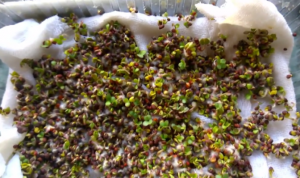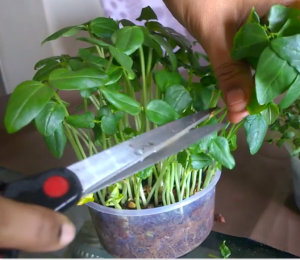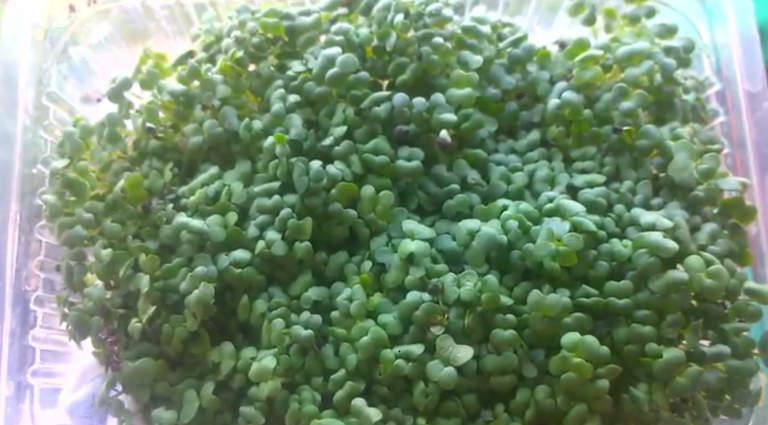In fact, under the mysterious term “microgreens”, the transplant of the most common garden plants is hidden. When the first sprouting leaves appear in the seeds, they focus on biologically active substances and it is recommended to eat them at this time.
Microgreens Cultivation can be started by anyone who likes fresh leafy vegetables without the use of pesticides, not just to get bored of this lockdown period. Maintaining microgreens, growth monitoring, and enhancing your mental health.
Moreover, nutrient-rich microgreens cultivation is a solution to the vegetable shortage, as well as alleviating the laziness of homestays. Homemade leafy vegetables can be brought to the kitchen forever …!
How to cultivate Microgreens?
To grow microgreens at home, you don’t need expensive equipment or special planting materials. Almost all kinds of good seeds can be used for microgreens cultivation. Examples include seeds like seaweed, lentils, fenugreek, mustard, wheat, watermelon, pumpkin, and ragi.

The fact that soil or other biological bases are not an essential component of agriculture is a green light for those who live in flats and those who have limited space. Microgreens can be used to grow plastic bottles and aluminum containers used to pack food in restaurants.
Wash the seeds thoroughly and soak them in water overnight. Rinse thoroughly the next day. Spread the seeds in a bowl, spreading them on a piece of tissue paper, newspaper, or cloth. Since the soil is not used as a base, it is best to use containers such as shallow basins. Spread the seeds so that they do not overlap. Rinse with water twice a day.
Another method is to sow seeds in a bowl full of holes and drop them into another watering bowl. It should be noted that the holes in the sowing vessel should be sufficient to penetrate the new roots. When filling the water it should be in a manner that is not immediately above the seed. This method does not need to be irrigated forever. Just watch the water level. Moreover, in this system, the plants grow splendidly.
The prepared seeds should be covered with a damp cloth until the sprout is well-formed. The seeds begin to germinate within two days, and within 10 to two weeks the microgreens will have sufficient growth.
After seed germination at least two leaves come out, we can harvest the microgreens. Care should be taken to harvest the leaves before they ripen. Once the plants have grown, use a stalk cut above the root.

Each seed has its characteristics, and some grow vigorously and quickly. Others take time to grow. Since they do not need direct exposure to sunlight, they can be grown as an ornamental plant indoors, in the living room, kitchen, and near the window. Anyone who cares for a child or an elderly person will be happy if they can care for them, especially without physical labor.
Nutritional value of Microgreens
When the first sprouts appear, the seeds provide all the useful things needed for further life. With a plant in the microgreen stage, we obtain at least twice as many valuable components from adult samples.
Also, the product is very easy to digest, for example, dishes from prepared grains and legumes, with almost zero calorie content. Many seeds have high levels of vitamin C in their small buds, but when more leaves appear, the density is significantly reduced.
Due to the presence of a large number of active substances, any micro gene can help our body. These small plants are known as a repository of nutrients. All leafy vegetables are rich in nutrients. These same plants certainly have the same quality.
It is rich in vitamins A, C, E, K, folic acid, and minerals like calcium, magnesium, potassium, iron, and zinc. There are many other benefits of controlling blood sugar levels, preventing obesity and stagnation!
One of the highlights of microgreens is the presence of antioxidants. Because of its abundance of antioxidants, these foliage leaves can help fight cancer to some extent.
These juicy leaves are great in terms of taste, from juices and salad to a variety of dishes. The plants can be cut with or without roots. You can use it raw or cooked in curries, juice, or salad.

